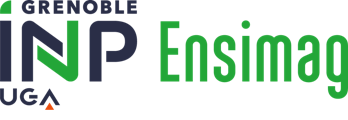Number of hours
- Lectures 31.5
ECTS
ECTS 3.0
Goal(s)
This course brings together programming techniques symbolic reasoning and Bayesian Pattern Recognition. Techniques for symbolic reasoning are provided based on rule based programming and structured knowledge representations using schema. Programming of rules and schema are illustrated with exercises in the CLIPS Expert-System environment (developed by NASA). Techniques Bayesian pattern recognition include Linear and quadratic discrimination functions followed by feature space reduction techniques based on the Fisher discriminant function and principal Components analysis. An introduction to learning theory is provided using the EM algorithm to estimate Gaussian Mixture Models, as well as linear pattern detectors, boosted learning, kernel methods and support vector machines. All lectures are given in English.
Contact James CROWLEYContent(s)
Part 1: Reasoning with rule based expert systems.
1. Introduction to Expert Systems
2. Rule based programming methods
3. Structured knowledge Recognition
Part 2: Recognition and Learning
1. Introduction to Bayesian recognition
2. Discriminant functions
3. Learning with EM and Mixture Models.
4. Linear Detection functions, boosted learning and SVM.
Prerequisites
Probability Theory (Ensimag 1st year cours)
The exam is given in english only 
Written Exam (documents allowed)
N1=E1
N2=E2
This course is given in english only 
- Polycopié du cours / Course Notes
- P. Lucas and L. Van de Gaag, Principles of Expert Systems Programming, Addison Wesley, 1991.
- C. M. Bishop, Neural Networks for Pattern Recognition, Oxford University Press, 1994.



